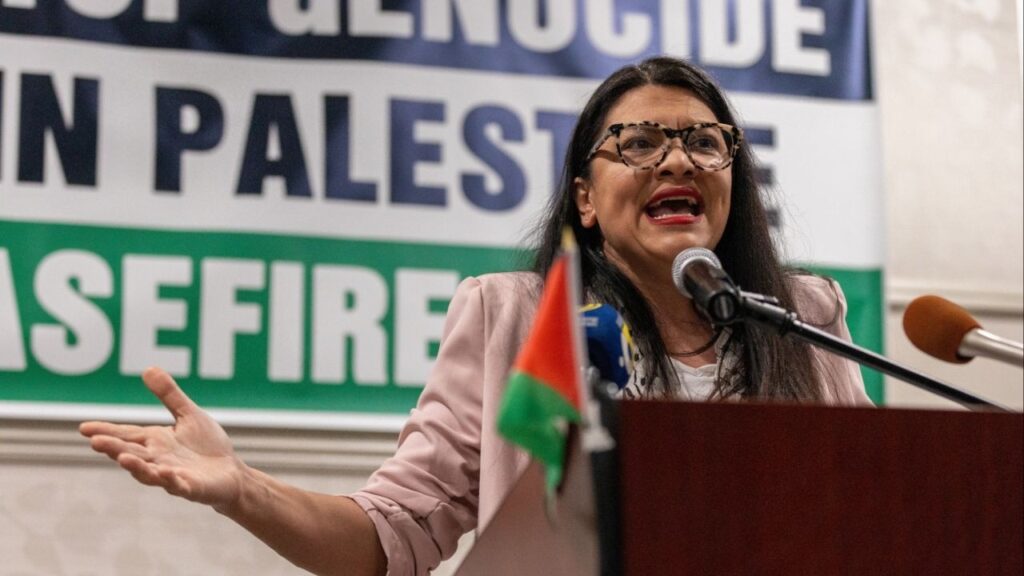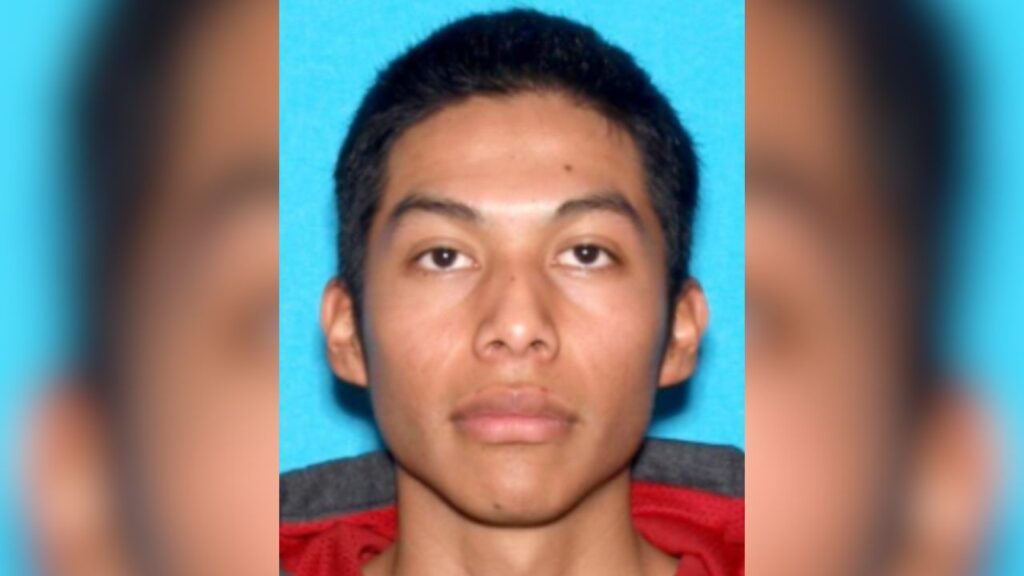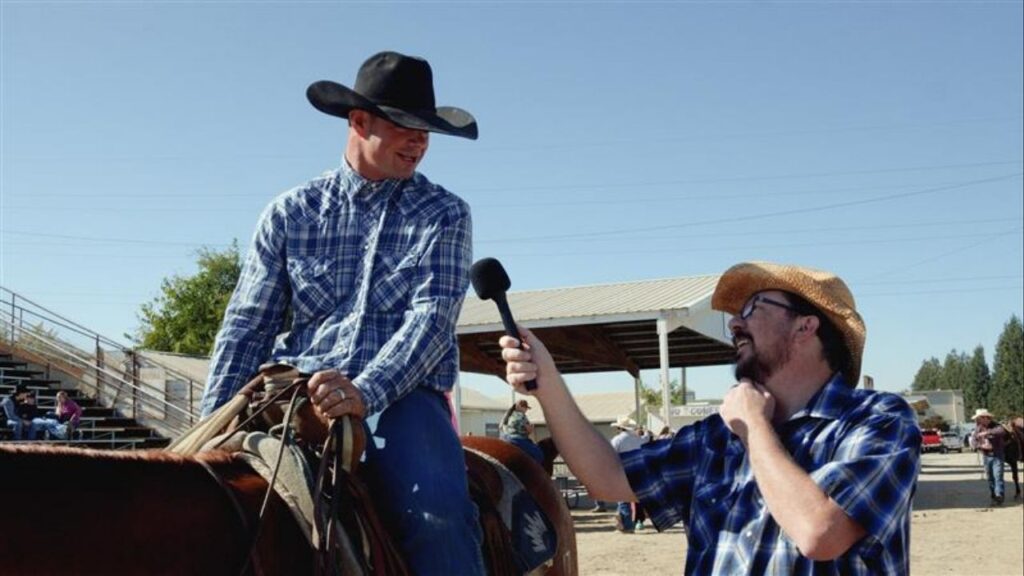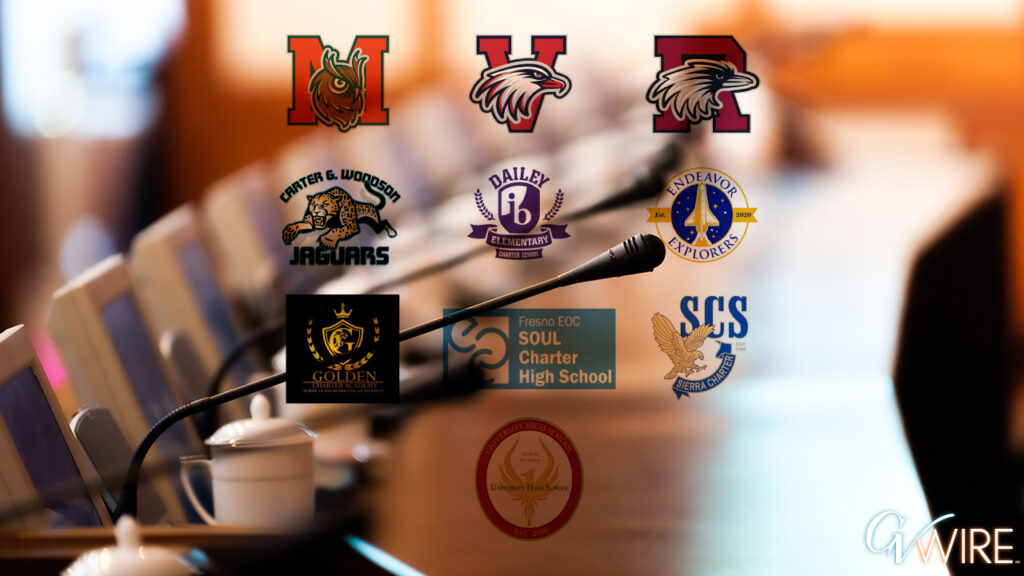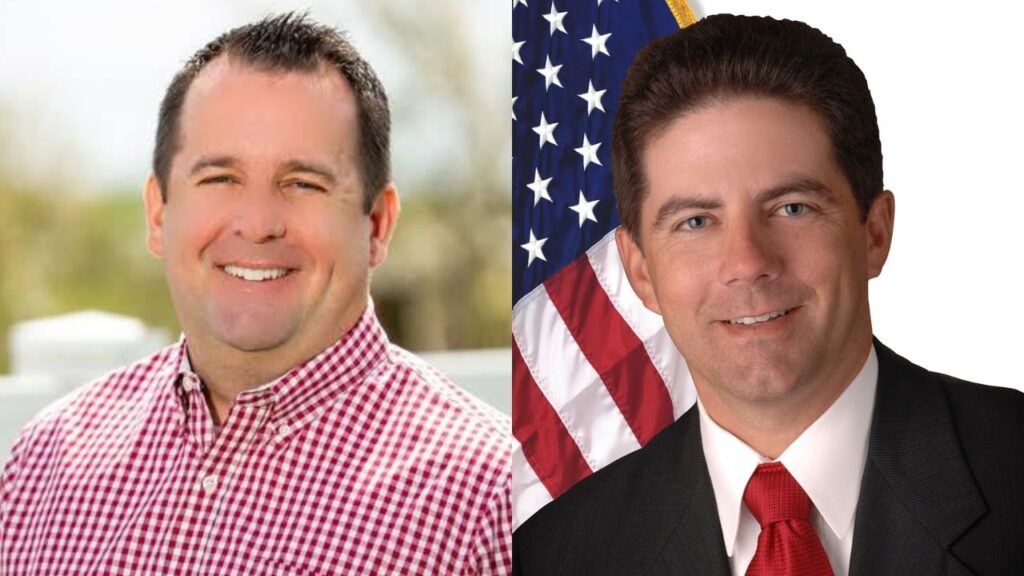A person is carried away at a pro-Palestinian encampment at UCLA late Tuesday, April 30, 2024, in Los Angeles. (AP File)

- There are connections between current Palestinian protests on college campuses and past activism.
- While the current protests are significant, they are noted to be less widespread and violent compared to the Vietnam War era.
- Despite historical echoes, contemporary campus protests show differences in law enforcement response and levels of violence.
Share
|
Getting your Trinity Audio player ready...
|
In a way, the black-and-white Palestinian scarf draped over Hannah Sattler’s shoulders this week and the tie-dyed T-shirts of 1968 are woven from a common thread.
Like so many college students across the country protesting the Israel-Hamas war, Sattler feels the historic weight of the anti-Vietnam war demonstrations of the 1960s and 70s.
“They always talked about the ’68 protest as sort of a North Star,” Sattler, 27, a graduate student of international human rights policy at Columbia University, said of the campus organizers there.
“Even the choice to take over Hamilton Hall was always the plan from the start of the encampment,” she says. “Not only because it just made a lot of sense logistically, but it also has that … strong historical connection with the 60s protests.”
The Anti-Vietnam War Movement
Still, although it might be tempting to compare the nationwide campus protests to the anti-Vietnam War movement of a half century ago, Robert Cohen says that would be an overreaction.
“I would say that this is the biggest, in the United States, in the 21st century,” said Cohen, a professor of history and social studies at New York University. “But you could say, `Well, that’s like being the tallest building in Wichita, Kansas.’”
Related Story: Over 2,000 Arrested in US Campus Pro-Palestinian Protests
So far, there have been no bombings, like the one in August 1970 at the University of Wisconsin that killed a postdoctoral researcher and did $6 million worth of damage. There has been no repeat of the infamous Kent State massacre of May 1970, when National Guard troops opened fire on protesters at the Ohio campus, killing four.
Police Activity at Protests
Police have cleared encampments and made more than 2,000 arrests, and some, like the crackdown Thursday at UCLA have involved violent clashes. But other actions by law enforcement, including the clearing of protesters who had occupied Columbia’s Hamilton Hall, were carried out without incident. At some campuses, protesters have struck agreements with administrators to resolve their demands and packed up their tents.
Yet, to some, there is a feeling that the situation is just one hair-trigger moment away from tragedy, says Mark Naison, who took part in the sometimes violent protests at Columbia in 1968.
“People are terrified,” said Naison a professor of history and African & African American Studies at nearby Fordham University.
In many ways, this does feel like the America of what Cohen calls “the long 60s.”
The Kent State Tragedy
In September 1970, barely five months after the Kent State tragedy, the President’s Commission on Campus Unrest delivered to Richard M. Nixon a “Letter To The American People.”
“This crisis has roots in divisions of American society as deep as any since the Civil War,” the panel wrote. “The divisions are reflected in violent acts and harsh rhetoric and in the enmity of those Americans who see themselves as occupying opposing camps.”
Watching the gyre of emotions on campuses from Connecticut to California, those words feel as if they could have been written this week. Even U.S. Rep. Lauren Boebert made an allusion to that earlier time.
Related Story: Biden Says ‘Order Must Prevail’ on Campuses, but He Won’t ...
“This is not the summer of love!” the Colorado Republican shouted through a bullhorn during a visit to chide protesters at George Washington University on Wednesday.
But Cohen says emotions — and sheer numbers — are nowhere near the levels they reached at the height of the Vietnam era.
“Look. NYU was one of the first campuses to mobilize,” he says. “Maybe there’s 200 students — maybe. There are 30,000 (undergraduate) students at NYU, right?”
Columbia’s Hamilton Hall
Another difference that has struck observers is the quick crackdown by campus authorities. In 1968, students occupied Columbia’s Hamilton Hall for nearly a week before authorities moved in. The bust — when it finally came — saw more than 700 arrested.
“It’s funny because Columbia is very proud of … Columbia students’ history of activism,” said Ilana Gut, a senior at the university’s sister school Barnard College. “So their attitudes toward the modern-day activists, at least in the eyes of protestors, is very ironic — that they’re so proud of their past protestors, but so violently repressive of their modern-day ones.”
Robert Korstad, who protested in the 1960s and is now a professor emeritus of public policy at Duke University in Durham, North Carolina, does see comparisons.
Then, as now, they were protesting a violent war. And now, in addition, students have felt pervasive conflict, said Korstad, with the country’s rash of mass shootings and the murder of George Floyd by Minnesota police.
“I’m really thinking about what’s motivating these young people and what they’ve grown up with and thinking about over their short lifetime,” he says.
There is a Lack of Respect for Differing Views
Another disturbing difference between then and now, says Jack Radey, is the lack of respect on campuses for differing views.
Radey was a 17-year-old activist during the original Free Speech Movement at the University of California, Berkeley. He says today’s students have succeeded in amplifying the Palestinian cause, but, in some cases, at the cost of civility.
“We did not look on those students who had not joined the free speech movement as idiots or traitors, but as people we needed to convince,” said Radey, president of the movement’s archives. “You don’t do that by violence or with super-heated rhetoric.”
Some, like Korstad, believe the campus unrest hastened the U.S. withdrawal from Vietnam. Many of those protesting today want their colleges and universities to divest from companies that do business with Israel or otherwise contribute to the war effort.
MIT Research Contracts with Israel
At the Massachusetts Institute of Technology in Cambridge, Mass., protesters are asking MIT to end all research contracts with Israel’s Ministry of Defense, which they estimate total $11 million since 2015. Students there have taken direct inspiration from MIT protests against the Vietnam War and South African apartheid, including turning to the archives to study those protesters’ strategies and using some of the same slogans on their signs and setting up the encampment in the same place.
But the group also learned from the failure of protesters in the 1980s to convince the campus to divest from South Africa.
“We acknowledge that disclosure and divestment is a longer process,” said chemistry graduate student David Berkinsky, who is part of MIT’s Jews for Ceasefire group. “That’s why we have such a pinpointed request. We think it’s a reasonable ask.”
With such widespread support for Israel, Cohen says major changes at most campuses are unlikely.
“This is not an American war, except the Americans are, their firepower is being used by the Israelis,” Cohen says. “It’s different when you have American troops there and you might be drafted.”
Still, students like Sattler now feel a part of a larger tradition.
Related Story: Police Dismantle UCLA Tent Camp, Take Pro-Palestinian Protesters Into Custody
The Baltimore native is Jewish, but has been wearing a keffiyeh scarf to the protests. She says her parents took part in the anti-Vietnam protests during their college days, and that struggle has very much informed the current action, noting that students watched a documentary about 1968 and had people from those demonstrations speak to the protesters.
Sattler says the Columbia protesters were specifically trained in non-violent tactics and de-escalation. “I would not be a part of a movement if it wasn’t centered in nonviolence,” she says.
She is willing to be arrested, if that is how the authorities wish to respond.
But not all share that level of commitment.
Wearing a stretchy Spiderman mask and black hoodie, 18-year-old Brayden Lang hung on the fringe of the protest as fellow Northern Arizona University students carrying black-red-white-and-green Palestinian flags swarmed around him.
Asked if he felt a kinship with the student demonstrators of the 1960s and 70s, the freshman business marketing major responded innocently: “You’re talking about the women’s suffrage movement?”
Earlier this week, police there dismantled a small fence made of chicken wire as well as nearly two dozen tents. About 20 people were arrested.
Lang says he will continue to protest. But he says he won’t go to jail for this cause. “They have much more bravery than I do,” he said of those who were arrested. “They’re much more willing to commit than I am. I am not willing to go that far.”







